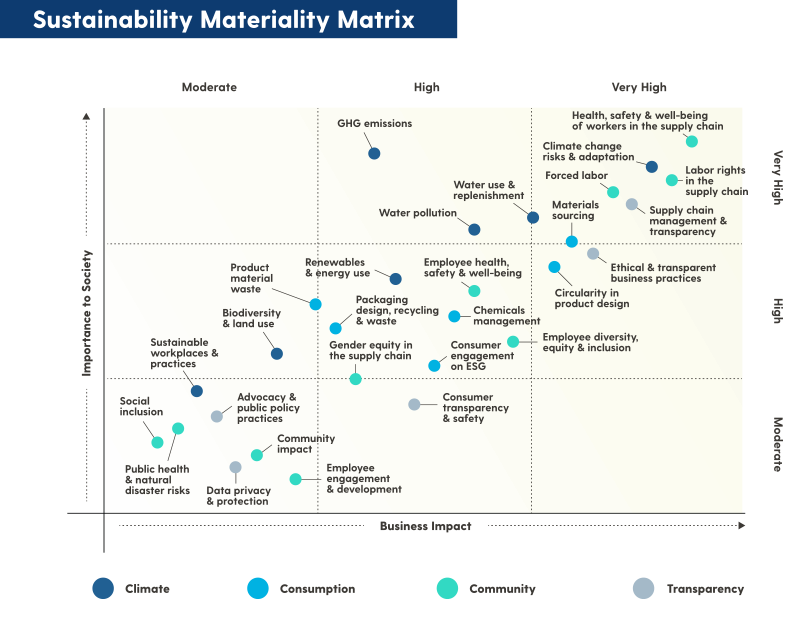We surveyed a wide range of internal and external stakeholders on these 28 issues as they relate to our business success, importance to society and our ability to make an impact. Among the external stakeholders were NGOs, apparel industry peers, think tanks, retail partners, research institutions, corporate leaders and investors. Internal stakeholders included employees within our operations, finance, product, legal, communications and IT functions, across all regions in which LS&Co. operates.
All 28 issues are important, and LS&Co. will continue to address each one as part of our global sustainability strategy. To make sure we were able to identify relevant priorities among these issues, GlobeScan used an approach known as maximum differential, or max-diff, scaling, which uses “best-worst” scaling to gauge respondents’ preference score for each issue. This technique results in more accurate and actionable findings, as respondents are compelled to be decisive. Without this approach, respondents could have ranked everything as important or would have had to rank a long list of issues, which can introduce significant inaccuracies.
Using the results of the reviews and surveys, GlobeScan created a matrix detailing our priority issues. The x-axis, which refers to the relative importance of the topics to LS&Co.’s business, also includes a weighting derived from the SASB materiality map, including the specific issues highlighted for “Apparel, Accessories & Footwear companies.” The y-axis highlights the relative importance of the topics to society at large — those issues related to the best interest of people and the planet.






















